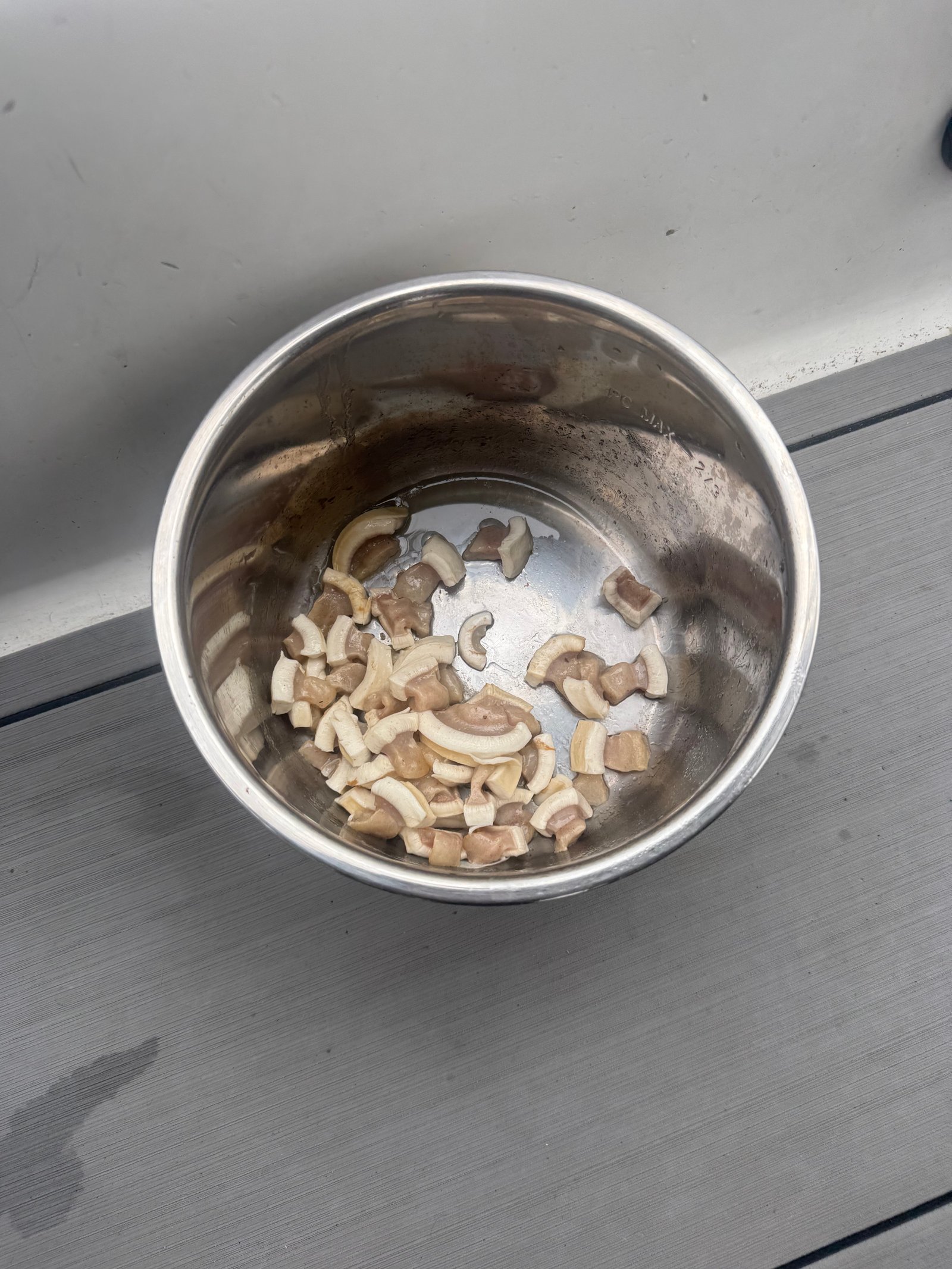I was first introduced to the concept of whale hunting in Nome, Alaska. The dock where One Ocean was tied up also served as a popular fishing spot for local kids. On a hot summer day, I found myself chatting with one of them who hadn’t had any luck fishing that day—I wanna say his name was Billy, but that could be totally made up. Our conversation drifted from fish to S/V One Ocean, which stood out in the harbor full of DIY gold dredgers and smaller fishing craft.
Naturally, he inquired, “Is this your boat? What are you guys doing here?”
I explained our research mission and mentioned that one of our projects—done in partnership with BC Whales—involved whale identification. He nodded, then casually replied:
“You know what you gotta do? If you see a whale, you gotta shoot it.”
I was a bit stunned—I’d never heard that kind of response to our research before.
“The only thing we’re shooting is photos,” I said, half-laughing, half-shocked. He proceeded to tell me about whale encounters his dad had experienced.
This was a moment of culture shock—and a reminder that we were entering a region where whales are an essential food for Indigenous communities. That comment marked the beginning of a deeper understanding of life in the North, where tradition, survival, and the sea are intertwined.
In Arctic Indigenous communities, whale hunting is not commercial—it’s cultural and necessary. Under Aboriginal Subsistence Whaling (ASW) regulations, these hunts are legal and essential for food security and tradition. Communities rely on the ocean not only for sustenance but also to preserve language, identity, and ceremony. Regulations set under ASW and the IWC ensure whales are not over-hunted, supporting the continuation of these practices and promoting a healthy ocean ecosystem.
Muktuk is a traditional Inuit dish made from whale skin and blubber. It is illegal in this region to buy or sell muktuk. You can’t just try muktuk - you have to be gifted it.
Our next stop after Nome was Utqiaġvik, Alaska. On our sail to Utqiaġvik, we officially entered the Northwest Passage when we crossed into the Arctic Circle at about 66 degrees north. We anchored right offshore, and to get to town, we dinghied to the beach. One thing that was consistent in the Arctic was the warm and immediate welcome we received the moment we beached the dinghy.
The second we touched land, we were greeted by Dale Brower—a relative of Harry Brower, a respected Iñupiaq whaling captain who had come aboard Ocean Watch on the 2009–10 Around the Americas expedition.
Dale immediately offered us a ride to the airport, where we were headed to meet our lead scientist, Grace Dalton. It wasn’t a far drive, and with time to spare, he gave us a brief tour of the town. As we drove, he spoke about the land, his family, and the generational traditions of whaling. Then, he asked:
“Have you ever tried muktuk?”
We paused. Mark had—the only one out of the four of us riding along. Also the only one who had previously been to the Arctic. Dale chuckled at our hesitation and said his kids only liked it when it was slathered in Tajín. From then on, I wanted to try muktuk—not because it sounded appetizing, but to have the full Arctic experience.
My dreams came true in Tuktoyaktuk—though they came with only a small amount of gagging.
When we arrived in Tuktoyaktuk, we set our anchor and were quickly greeted by locals zooming up to us in their powerboat—a warm welcome that came packaged in a gallon-sized Ziploc bag filled with whale skin and blubber: muktuk!
Though I was still unsure about it, I was genuinely excited. When else would I be welcomed to a new town with beluga? Muktuk can be eaten raw, cooked, frozen, or pickled. Thankfully, Mike and Dave volunteered to prepare it—not traditionally over fire or frozen raw, but in our trusty boat Instant Pot, Kelpie.
When it finished pressure cooking, Mike wisely released the valve outside to avoid filling One Ocean with its infamously pungent smell.
The smell? Let’s just say—as Dave put it—it was worse than grizzly bear. I have no reference point for this, but maybe that means something to someone. For commonfolk—it doesn’t smell good.
They proceeded to cut the muktuk into thin, bite-sized pieces for us to try. A few of us gave it a go: Grace, Jenn, and myself. The skin had a mushroom-like texture with a fishy flavor. The blubber—cold, slimy, and fatty—barely touched my tongue before I decided I’d had enough.
Next time, maybe I’ll try it with Tajín.
Image

Not only did the crew get to try muktuk in Tuktoyaktuk, but some crew members also watched it being prepared by locals. While exploring and talking to people, we learned that a beluga had been hunted the previous night near a nearby island in the Inuvialuit Settlement Region. They invited us to join them later that day as they processed it on the spit.
Mike attended the event and even got interviewed by a local news station.
The beluga had been hauled up from the beach on a shipping pallet—it took four of them to move nearly 300 pounds of meat to the cutting station. On the shoreline, they cut and separated the meat, hanging strips on wooden racks to dry. They seasoned thin slices with a dry rub—similar to how fish is dried and preserved. We all agreed that the dried meat seemed more appetizing than our boiled experiment.
Image
As we continued sailing through the Northwest Territories and Inuit Nunangat, one truth became clearer with each stop:
The ocean is the foundation of life here.
-Tess
